Thomas E. Ricks's Blog, page 194
March 16, 2012
Thinking more about Vietnam: Wars are neither won nor lost by strategy alone

By Col. Gregory
Daddis, USA
Best Defense
guest respondent
For the past six months, the Vietnam War has been a popular
topic among The Best Defense readers.
In October 2011, Lewis Sorley identified ten
reasons why General William Westmoreland near single-handedly lost the war
during his tenure as the MACV commander between 1964 and 1968. In January 2012,
retired Lieutenant General John H. Cushman argued that he had solved the knotty
problem of pacification as early as 1964, yet the unfortunately timed American
escalation in 1965 prevailed over his revelations.
More recently, Charles A. Krohn has offered a fascinating traveler's
account of a veteran retracing his steps across the 1968 Hue battlefields.
Given the inescapable comparisons between our nation's current struggles in
Afghanistan, it seems unsurprising that Vietnam has garnered so much interest
as of late.
The unfortunate thread interwoven through nearly all of
these accounts is the near universal oversimplification of American strategy in
Vietnam. Guest columnists, along with many commentators, invariably have
applied well-worn clichés like "search-and-destroy," "big unit war," and most
notoriously "attrition" to explain Westmoreland's concept of operations for the
employment of military force in South Vietnam. At the risk of tilting at
windmills, I would like to suggest that such aphorisms are unsuited for a
deeper understanding of what irrefutably was a much more intricate war. If we
are going to benefit collectively from the American experience in Vietnam, it
is time to unhinge ourselves from all too convenient tropes which hinder critical
analysis of historical events. This appeal is hardly novel.
In August 1965, roughly three months before the Ia Drang
battles of which Mr. Krohn spoke, The New
York Times ran a page one story titled "The Undefinable War." Reporting
from Saigon, correspondent James Reston argued that the war in Vietnam was "so
alien to American experiences" that it defied "precise definition and [was]
almost beyond comprehension." Conventional language failed to capture the
political, cultural, religious, and regional complexities of a country and a
conflict which were unfamiliar to contemporary Americans. The article further
underscored the difficulties of accurately portraying the violence then
escalating within South Vietnam's borders. As Reston pronounced, "This war
needs a new vocabulary."
Nearly five decades later, Reston's largely unheeded
admonition reminds us how many historians and veterans have used-and
misused-language in their portrayals of the American experience during the
Vietnam War. Just as the word "surge" now embodies the entirety of American
operations and strategy in Iraq during the Petraeus era, catchphrases like
"attrition," "body counts," and "search-and-destroy" have become mainstays
within the Vietnam War's historiography. One historian even has described
Westmoreland's "strategic equation" as "mobility + firepower = attrition."
Strategy could not be made any simpler.
Yet in their employment, these shibboleths have helped
distort the historical record. As the MACV commander, Westmoreland never
implemented a strategy focused solely on attriting enemy forces, just as he
never focused solely on pacifying the countryside. As much as the general's
detractors wish him to be a narrow-minded traditionalist intent only on
achieving high body-counts, the real Westmoreland simply never viewed the war
in such limited terms. Throughout his correspondence with both senior officials
in Washington, D.C. and subordinate commanders in South Vietnam, MACV's chief
consistently highlighted the problems of a war that could not be won by
military force alone. Certainly, attrition was a part of American strategy
under Westmoreland, just as it was under his successor Creighton Abrams. How
else were American forces supposed to confront the threat of both North
Vietnamese regulars and the armed forces of the southern National Liberation
Front?
Lost in the selective use of words like "attrition" are the
attendant non-military aspects of American strategy in Vietnam. If Westmoreland
was so intent on killing the enemy, it is doubtful that one of his first
messages to the commander of the incoming 1st Infantry Division
would have spoke of something other than attrition. Less than three weeks after
Ia Drang, Westmoreland directed the 1st Infantry to place emphasis
on rural construction that would assist South Vietnamese units in their own
population security operations. As the general noted in early December 1965,
"an effective rural construction program is essential to the success of our
mission." In fact, even before Ia Drang Westmoreland wrote to Chairman of the
Joint Chiefs Earle Wheeler that "civic action in the form of food, medical care
and other assistance" was a "critical aspect" of the war. These were not hollow
words. Examining the operations of the 25th Infantry Division in Hau
Nghia province, for instance, one finds a unit balancing the myriad tasks of
both a military and political struggle rather than artlessly floundering about
on search-and-destroy missions. Other units, like the 4th Infantry
Division, followed suit.
The perils of simplifying American strategy in Vietnam lie
in the potential for misusing history by misreading it. If I may be so bold as
to disagree with my kind host, Mr. Ricks misconstrues Clausewitz when he
contends that war
is simple. In fact, Clausewitz maintained just the opposite and it is
worthwhile to read the entirety of Book One, Chapter Seven in On War to understand why the Prussian
proposed such an argument. More to the point of Vietnam, if we dismiss
Westmoreland's strategy as simply one of misplaced attrition, it becomes all
the easier to succumb to the belief that a well-conceived strategy can solve all
of our foreign policy problems. It is possible that what failed in Vietnam was
not an attrition strategy, but something much more complex.
The ramifications of this hypothesis are worth considering
beyond the tropes and clichés of a lost war in Southeast Asia. Talented
Americans generals can develop and implement a comprehensive political-military
strategy and still lose a war. What does it say about strategy if even good
ones aren't enough to win wars?
Gregory A. Daddis
is an academy professor at West Point and author of
No Sure Victory:
Measuring U.S. Army Effectiveness and Progress in the Vietnam War
.
Just what does a battalion S-3 do all day? Maj. Ukiah Senti is glad you asked

According to Maj.
Ukiah Senti, in Afghanistan, this is the life of an Army battalion S-3, or
operations officer, when engaged in combat operations: "A typical day as an S-3
is that you're working probably good 20-hour days, 99 percent of the time.
There was a lot of decision-making that weighs heavily on your in terms of life
and death decisions in terms of bombs and supporting units. At any given time
you have five different fights and you have to decide who is going to get the
access if you only have two for the fight. That means three of the fights
aren't going to get it. That's the kind of decision-making for the S-3."
In
the same Army interview, Senti also gives a shoutout to my successor on the
Pentagon bigthink beat at the Washington
Post, Greg Jaffe, who recently wrote that fine
article about a Marine suicide. (And then about the reversal
that means the widow will get a life insurance payment.) Senti says that young
Jaffe "is probably one of the best writers and the least biased writer that's
out there...He writes something and it really does make an impact."
Romney's Bain Capital profits from aiding Chinese domestic surveillance operations

Bain Capital, his old outfit and home of some of his money
that hasn't moved offshore, is helping the Chinese government with domestic
surveillance. Why am I not surprised?
This Tibetan monk doesn't sound like a Romney supporter:
"There are video cameras all over our monastery, and their only purpose is to
make us feel fear."
Rebecca's War Dog of the Week: What's really going on with Rex?

By Rebecca Frankel
Best Defense Chief Canine Correspondent
This week's mini-post comes from afar, but I have been
paying attention to the interest that's rippled these last few days around the
pending adoption of MWD Rex, who's been a War Dog of the week once
already this year.
Rex, who will celebrate his eleventh birthday next month, is
no longer able to fulfill his service duties. The German shepherd is "showing
symptoms of facial palsy and hip dysplasia" and, after a ten-year career, is ready
for retirement. Former Marine Meagan Leavey, who was Rex's handler for more
than three years, is now vying for the chance to give him a permanent home. (While
on tour in Iraq, the pair was wounded by an IED and spent a long recovery
together; Leavey was awarded a Purple Heart.) The war-dog buzz picked up when,
in her effort to speed up the adoption process, Leavey reached out to Senator
Chuck Schumer who readily took up the cause as his own, and even launched a
petition to push the process along.
But, as it happens, reports of Rex's fate and the urgency over
the "struggle" to adopt him have been somewhat exaggerated. Rex's life doesn't
hang in the balance nor is there any evidence to suggest that the Marine Corps
is unduly keeping this MWD from the comforts of a civilian life. Mike Dowling,
Rex's first handler, fully behind Leavey's efforts to adopt Rex, took the time
to clarify Rex's situation and the practical realities of the MWD adoption
process. He writes:
As well intentioned and supportive that people are, there is
NOTHING that anyone can do to speed up this process that hasn't already been
done. No petition, no phone calls, no letters, or anything else. The letter
from Senator Charles Schumer to Air Force Secretary Michael Donley was more
than enough to put enough pressure on getting Rex adopted out as fast as
possible....
I have been in touch with Megan through all these years as
we both have built extraordinary bonds with Rex and have stayed updated on his
health and progress throughout his entire career....
Like all retired mwd's Rex has earned his retirement. He
will get adopted out and it will be soon. You can't fault Megan for trying to
speed up the process because as handlers, we look out for and love our dogs more
than anybody else.
Dowling, who wrote about his time with Rex in Iraq in 2004
in Sergeant
Rex: The Unbreakable Bond Between a Marine and His Working Dog, is doing
what he can to help get Rex home with Leavey as fast as possible. At Senator
Schumer's request, he wrote a letter of support. You can read Dowling's full
breakdown and the letter in full here.
Rebecca Frankel, on leave from her FP
desk, is currently working on a book about military working dogs to be
published by Free Press.
March 15, 2012
Wartime command structures: Why are we so bad at designing effective ones?
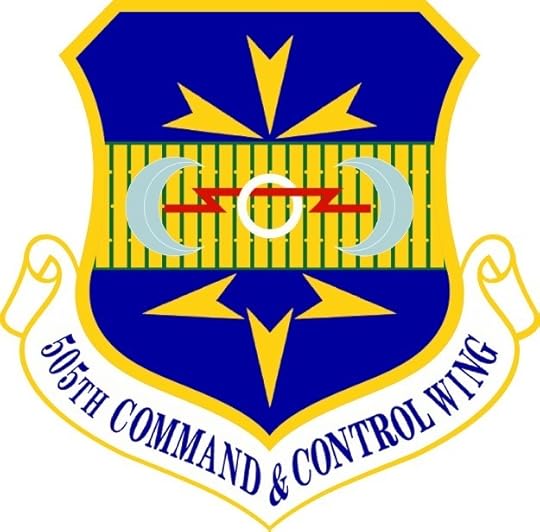
I recently spent several hours trying to make sure I
understood who the American commanders in Afghanistan have been since 2001.
You'd think it would be simpler than that, but there were questions: Was
Hagenbeck ever in command of the entire American presence, or just of part of
it? When did Franks turn over country command to Mikolashek? Or did he? Are you
sure?
And that was the easy part. Next, try to figure out the
command structures -- NATO, ISAF,
American conventional forces, Special Operators, etc. What a mess.
But not, I further considered, unusual. Schwarzkopf had a
screwy command structure in the 1991 Gulf War -- like, why is the ground
commander 400 miles from the front? Westmoreland had problems in Vietnam. He
was not the theater commander, as best as I can make out, but commander only of
American ground forces in South Vietnam. And MacArthur divided his forces, had
his chief of staff dual-hatted as a corps commander.
It makes me wonder if there is a good book on American
command-and-control structures in
modern times. If not there is a good dissertation to be done. If you do it,
maybe also include World War I.
Breathalyzers: Another Navy Dept. nail in the coffin of 'special trust and confidence'
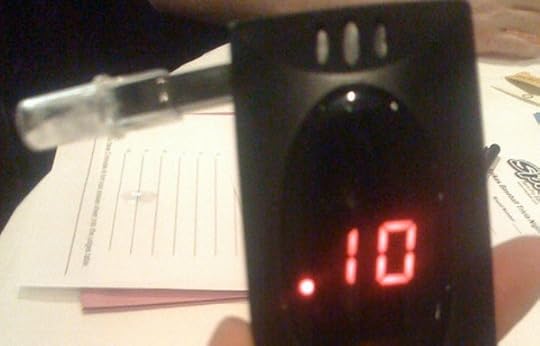
By "John Paul
Lejeune"
Best Defense Guest columnist
Secretary of the Navy Ray Mabus announced on March 5 a new
personnel initiative applicable to the Navy and Marine Corps called "21st
Century Sailor and Marine" (21CSM), which is designed to "maximize Sailor
and Marine personal readiness" -- a laudable goal.
As a serving active duty officer in either the Navy or the
Marine Corps, north of O-3 and south of the FO/GO ranks, I wonder if the
enhancement in personal readiness occasioned by breathalyzers will be worth the
trade-off in flagging morale, professional insult, and perceptions of detached,
out of touch senior leadership. I will
tell you this: Getting a breathalyzer
after morning PT as a precondition for working like hell for the rest of the
day has great potential to piss me right off.
While the "in the weeds" specifics of how the breathalyzer
program will work are not yet revealed, the general contours of the program are
that Navy leaders will administer breathalyzers to operational unit work
sections duty sections -- apparently everyone on duty, including, presumably,
ship and squadron commanders -- plus "random" samples of other sailors in shore
and support commands. No probable
cause. No reason to suspect alcohol use,
much less abuse. One size fits all
screening of everyone, regardless of rank, career status, history of alcohol
use or abuse, duty performance, or billet. Marine units will phase in the breathalyzers later, after the Navy beta
tests the program.
This is among the most paternalistic, professionally
insulting concepts I've seen in all my years of service, and I'm not sure I
will submit. Yes, I know my options, and
I just may exercise them and go right over the side the first time the duty
blowmeister shoves a plastic tube in my face and treats me like a drunk driver
for daring to report for duty. To the
CNO, CMC, CMC of the Navy, and SgtMaj of the Marine Corps, here's my question: At what point will one of you four exercise your
duty to tell the Secretary of the Navy, "Hey, Boss, WTF, over?" and that he
really ought to fire whichever clown came up with this idea to screen everyone
to identify serial alcohol abusers who are readily identifiable through other
means. One or more of you needs to find
the moral courage to recommend relegating this part of the initiative to the
dustbin of really bad naval ideas.
Secretary Mabus' speech announcing the initiative notes
"[t]he test will be used only as a training and prevention tool...This is a
deterrence tool used to identify and direct appropriate counseling or treatment
before any of those career or life-altering incidents happen." Well, which is it, a training and prevention tool
or a deterrence tool? Deterrence usually
equals avoiding some bad outcome, which is inconsistent with viewing this as a
"training and prevention" tool. We can't have it both ways.
Moreover, the Secretary notes the program will be "used to identify
and direct appropriate counseling before any of those...incidents happen."
This is because the time-honored tradition of assessing sailors and
Marines by looking them in the eye at quarters or morning formation and holding
them accountable for showing up for duty under the influence of alcohol -- what
some old salts used to call "personal leadership" -- is an insufficiently precise way of knowing
who is drinking too much. This
"program" is encouraging "leaders" to default to a plastic
straw and digital display in place of demonstrating the moral courage required
to pull a promising petty officer or sergeant out of formation and haul him to
the infirmary for a fitness for duty physical.
Secretary Mabus observed: "In 13 of
20 recent Navy Commanding Officers relieved, alcohol was a component in
the incident for which they were relieved." So, according to
Secretary Mabus and the cowardly sycophants who thought up this scheme, the
problem is not that we have poor character development and command screening
processes. Rather, the problem is that we can't possibly tell when people
are drinking too much and displaying conduct which suggests they might not be
fit for command. And breathalyzing every O-5 and O-6 on duty ensures that
we will have the soberest bunch of moral coward commanders in the history of
the naval force. The solution to commanding officers abusing their
positions in alcohol related incidents isn't character development and rigorous
screening. The solution is a breathalyzer. Oh. My. God. What have we become?
I am keenly aware that alcoholism threatens readiness and
the lives, well-being, families, and professional performance of sailors and
Marines. I've had alcoholic service members
work for me, I have seen it control their lives, and I think I have done my
duty to get them help when I could and to hold them accountable when I
must. I am also intensely aware that the
fix is in holding leaders accountable
for exercising due diligence with regard to educating and influencing their
sailors and Marines on the dangers and consequences of alcohol abuse. That does not mean every ship CO or battalion
commander is going to see the old man for every DUI in his unit. It does mean that if a ship CO or battalion
commander has cultured a leadership environment in which clear signs of alcohol
abuse are tolerated or even encouraged, and if there is a spike in
alcohol-related incidents in the command, service senior leaders are going to
take a hard look at what is going on inside the unit. Leaders exercising their solemn duty to
junior sailors and Marines, who have even a modicum of intuition about their
charges, can figure out who is sucking the worm out of the bottle every night
without resorting to the extraordinary insulting and distrustful measure of
breathalyzing every shipmate who steps across the brow and every Marine who
marches into a gun park. Of course this
might require the unthinkable: For the
squadron XO to come in on a weekend and walk through the barracks, for the
Master Chief to get off his ass in the Chief's Mess and head down to troop
berthing, and for the company commander to fire a 1stSgt hiding a platoon
sergeant's alcohol problem. Egad, it
might even require a flag or general officer to look at his O-6 brigade or
group commanders for regular signs of red faces and bloodshot eyes. It might require -- wait for it -- leadership --
for officers to be officers and not simply Powerpoint producers or flag mess
food blisters.
Think of the signal this program sends to our officers,
specifically our junior officers:
welcome to the fold; you are the next generation of captains and
colonels, admirals and generals; we love you like our younger brothers and
sisters; we expect enormous productivity, professionalism, and sacrifice out of
you; we entrust you with monumental responsibility; we want you to think
strategically year to year while acting tactically day to day; we want you to
blow in a tube like you are Lindsay Lohan in return for the privilege of
showing up, embracing your mortality daily, and working really hard in
dangerous and austere conditions for modest pay and recognition. Who wouldn't want to keep taking that
deal? If corporate leadership tried this
stunt in a Fortune 500 company, they would get a considerable reaction from the
union or the labor force, and their retention programs would suffer
massively. Labor simply would not stand
for an invasive program like this. The
military is different, and we just roll over for it. Maybe it is time for military leaders to
start thinking about our service members more like a labor force (any active
duty member who says the military is categorically different and does not
respond to human resources programs in the same way as a civilian labor
force: Please return your reenlistment
bonuses, flight pay, and subsidized health care stipends to the U.S. Treasury
at once, and call personnel to zero out your generous annual leave balance). Leaders should recognize that it is possible
to cross redlines with the force.
Personally, this is a redline for me.
So here is one version of how this plays out: Lieutenant Umptefrats and Captain Beltbuckle,
classmates at the Naval Academy, meet up in Honolulu. Close friends at the Academy who boxed the
same weight class and remain within 5 pounds of each other, Umptefrats is a
division officer on the USS Chosin
and Beltbuckle commands a company in Third Marines. Smart, sharp, dedicated, and diligent, they
work hard -- real hard -- enduring separation from their young families for
months at a time conducting and supporting combat and presence operations at
sea and ashore. Their wives give them
their liberty card to go out together. It's a weeknight, so both officers are keenly aware that they have to
keep it in check. Still, the beer starts
flowing and the stories about misdeeds in Bancroft Hall abound. Each of them has 5 beers before they call it
a night just after midnight. They take
taxis home. When each of them reports
for duty at 0630 the next morning, their breathalyzers register .013. Neither is impaired, and both are fully
prepared to execute a full workday. Absent a breathalyzer, no one on the ship or in the battalion would
likely know or care that either officer had even been out the night
before. Now, with both officers showing
up and blowing very low alcohol levels, their COs are notified. Each officer is called in to see the XO so he
can evaluate them for himself and counsel them on responsible use of
alcohol. Whispers about "drunk on duty"
start circulating, both officers get a little scared for their careers. Then they get pissed at being treated like a
problem child trooper with 3 NJPs in his book, snatched by the Shore Patrol out
of a drunken bar brawl in
Phuket. How long before both these
guys start counting the days until their five years are up so they can go back
to grad school on the GI Bill?
We have tools for determining whether Umptefrats and
Beltbuckle, their sergeants and chiefs, their seamen and Marines are abusing
alcohol: daily observation; evaluation
of duty performance; perceptions of peers; knowledge of life stressers; receipt
of information about financial troubles; brushes with law enforcement. We don't need another one size fits all tool
that screens everyone to identify a few, and the leadership doesn't need to
insult everyone and treat us all like wayward teenagers in order to identify a
relative few folks who would dare show up for duty under the influence of
alcohol.
This tool is categorically different than the inspections we
conduct to detect the presence of illicit drugs: Unlike the urinalysis program, this
"leadership" instrument threatens to sweep up members of the force for engaging
in perfectly lawful activity, even tacitly encouraged by the government through
the sale of booze in exchanges and clubs.
Unlike the urinalysis program, which is virtually the only way to
determine whether a service member smokes marijuana during weekend liberty
periods, we have options with regard to diagnosing alcohol abuse. Moreover, it is cumulative: we already sacrifice some measure of privacy
for the greater good by submitting to random drug testing, even though the vast
majority of the force does not and would not use illicit drugs. This program in its current form is
needlessly invasive, professionally insulting and misguided. It warrants a hard look by the uniformed
senior leadership in reevaluating their advice to the secretary, who may be so
far removed from his own uniformed service that he misunderstands the
contemporary military. If retained, it
should be administered selectively, in the same way that the services test for
steroids (supported by facts which add up to probable cause), not daily
breathalyzers across the force.
The remaining issue this officer has to sort out is how I
will react personally when the breath Stasi
try to make me blow into an breathalyzer as a precondition for reporting for
duty. I might just say no, and take a
day of leave on short notice. When my
commander later hears about it and has "the discussion," that conversation
might offramp into discussion of other topics, like my transition off active
duty. I understand the leadership's
fervent desire to mitigate operational and personnel risk and help those with
alcohol problems to get counseling and continue to serve honorably. Treating every service member -- including
tee-teetotalers and moderate social drinkers who comprise the vast majority of the
force -- like a DUI suspect without cause is a flawed methodology for getting
from here to there. It is reactive
leadership at its finest, and bespeaks a lack of understanding of the modern
force.
"John Paul Lejeune" is
an active duty naval officer with more than 10 and less than 25 years of
service. He is leaving his service
identity and rank undisclosed to emphasize that this is a leadership issue for
both the Navy and Marine Corps.
An officer with a world of troubles
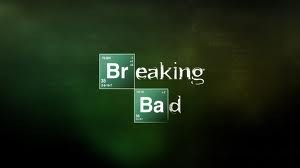
Army Lt. Col. Robert Underwood was charged
with hiring a hit man to kill his wife and
his superior officer at Fort
Lewis, Washington. His girlfriend found possible child porn-type stuff on
his laptop. He has done three combat tours. And when he was 9 years old his mother shot him five times and left him
for dead.
The rest of you, count your blessings.
March 14, 2012
'15 Minutes': A look at the Cold War days when SAC dominated the U.S. military
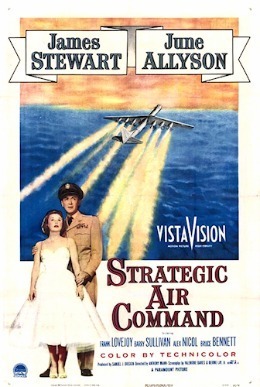
By
Lt. Col. Tom Cooper
Best
Defense guest columnist
As
I walked into a meeting the other afternoon a colleague asked if I thought the
Air Force would be around in 50 years. We struck up a conversation about Strategic Air Command (SAC) and where
the Air Force has been -- an important thing to consider when thinking where the
Air Force is headed and how to answer his question.
I
told him the best story I've read of the Air Force's early days, SAC and the
Air Force's place in national security is L. Douglas Keeney's 15 Minutes:
General Curtis LeMay and the Countdown to Nuclear Annihilation. The
book is more than just a story of LeMay, however, it shows his role in the
establishment of SAC and SAC's place in history is significant.
LeMay
set the tone for the early Air Force and in many ways the story of SAC is the
story of the Air Force. LeMay's views on
readiness were taught to him by Colonel Robert Olds. (Interestingly, one of the Air Force's most
public faces during "the rise of the fighter pilot" was Robin Olds, the son of Robert
Old. Fighter Pilot is the book to read on the son.) LeMay said that Olds taught him "the whole
purpose of the Air Corps was to fly and fight in a war, and to be ready to fly
and fight in that war at a given moment."
Keeney's
describes a LeMay-led SAC that dominated the nation's military during this time
and SAC's readiness is clear throughout the book:
--In 1954, SAC had a direct fixed capital investment
greater than an estimated $8.5 billion -- only the cost of aircraft and
installations. The largest company in
the United States was Standard Oil of New Jersey which represented a $4.5
billion investment. SAC's 185,000
personnel trumped Standard Oil's 119,000 personnel as well.
--In 1959, SAC hit its pinnacle. It had 2,921 bombers and tankers, a number
that would steadily decline as missiles took their position in the triad. SAC had forty domestic Air Force bases plus
twenty-five overseas, with 412 bombers and tankers on alert -- 149 of which were
on alert overseas. As a comparison, the
Air Force currently has 159 bombers and 511 tankers.
--In 1960, with bombers and command and control
aircraft airborne 24/7, SAC was completing an air refueling every 6.8
minutes. This is a testament to the
training and readiness of Airmen during this period. A KC-135 and a B-52 joining to within feet of
each other at jet aircraft speeds every 6.8 minutes is a level of readiness
that sets a standard that would be difficult to achieve even today.
--In 1961, SAC ran tests to test the response
time of the alert force. Reflecting
Keeney's choice of title, President Kennedy directed a fifteen minute alert
posture. Amazingly, the sharp edge of
SAC crews at the time was well beyond this capability. With 50% of the total SAC fleet on ground
alert (664 bombers and 494 tankers at the time) it was proven that this whole
fleet could get airborne in eleven minutes. In fact, in a single minute 200 SAC aircraft could take off.
--The
tension within the Air Force between manned-bombers and the ICBMs necessary to
deliver nuclear weapons is a great insight to those folks who wonder if the Air
Force is culturally flexible enough to continue its progression towards more
remotely piloted aircraft. The same
fears about keeping a "man in the loop" are evident but you see in the book
(and history), the Air Force was able to resolve concerns about autonomy.
SAC's
Cold War role winds down as the book ends in 1968 and is represented by the use
of B-52s in Vietnam. "SAC wore Vietnam
as a hair shirt," writes Keeney. The
transformation from SAC's 1961 level of nuclear readiness to its support of
conventional operations in Vietnam demonstrates a tension frequently evident
within the Air Force. How does an Air
Force balance its joint force support requirements and capability while
ensuring its enduring strategic responsibilities are retained? Air Force operations since 9/11, the
establishment of Air Force Global Strike Command and debates over numbers of
F-22s during the recent period reflect this tension.
The
book's other main theme is the effort it took to establish a robust warning
system to ensure there would be "15 minutes" for SAC to get airborne and the
history of the nation's nuclear weapons development enterprise. These stories, when presented in the context
of a nation fearful of its destruction, are a fantastic history of the period.
A
little known story was the Texas Tower early warning radars built off the
east coast. He tells of the whole cycle
from concept to eventual failure of this network of platform based radars. It is a great example of one Cold War
activity that captures the fear of the period, the cooperation of industry and
government, and most importantly good and bad leadership. The tale of Texas Tower 4 is particularly
useful to students of leadership and how to handle a crisis.
Military
decisions during the early Cold War provide a great lens to reflect on our
current austerity. The post-Korea draw
down led the Army and Marine Corps to a level barely able to survive and the
tactical air forces shrunk to an equal level of unpreparedness for small wars. This imbalance is a lesson critical to our
nation as we face the budgetary pressures of today. Favoring one way of fighting over another has
proven itself to be more expensive and this book highlights that well.
So 15 Minutes tells the story of a very
different Air Force than exists today. A
very different Air Force may exist in 2030, but the Air Force
will continue to be the service that our nation and the joint force trusts to
control its air, space, and cyberspace and to be in position to hold any target
globally at risk. This is why America's
Air Force will endure.
However,
it is important for a service built on technology to recognize that its culture
has to adapt as fast as the technology while retaining its heritage, or people
will continue to ask if it will survive another 50 years.
Lt.
Col. Tom Cooper is the
Air Force fellow at the Center for a New American Security. He is spending
this year reading following a career flying the E-3 Sentry, SAMFOX C-9s in the
89 AW and C-40s as commander of the AF Reserve's active associate 54
AS. He has served on the Joint Staff and the Air Mobility Command staff.
Another Navy skipper fired: 5 for the year
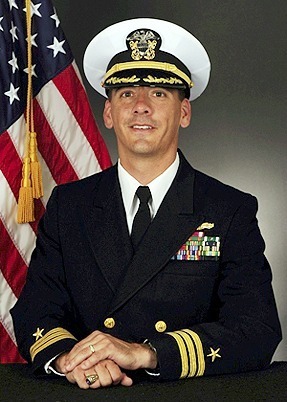
Hurled overboard from the USS San Diego, a big new
amphibious ship which that isn't even in the water yet. The culprit is the usual, "personal
misconduct." Why can't we ever fire
someone for combat ineffectiveness?
'Red Cliff': A striking Chinese film

Awhile ago one of the more astute grasshoppers recommended
watching Red Cliff, a film by John Woo that came out a few
years ago. When it arrived from Mr. Netflix I cooked up some chicken Penang curry,
cracked open a Rolling Rock, and popped the DVD into the machine. My wife bailed
after 10 minutes, but I enjoyed the whole nearly-three-hour shebang. I'd call
it a Chinese David Lean's mix of Saving Private Ryan, Gone with the Wind,
and Star Wars. Except with more battle scenes -- the last hour was just one big
old firefight. (You'll see what I mean.)
I'd thank the grasshopper in question but I can't find the
comment.
Just make sure you watch it with subtitles instead of the
incompetent dubbing.
Thomas E. Ricks's Blog
- Thomas E. Ricks's profile
- 436 followers



